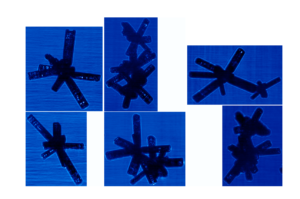Ice Microphysics
ACRC scientist Carl Schmitt is conducting a research project funded by the Department of Energy Atmospheric Systems Research (ASR) project, in partnership with scientists at SUNY Albany and the University of Wyoming. The project focuses on using Machine Learning to improve our understanding of processes within ice clouds.
Ice clouds are important because 70% of surface precipitation typically involves ice clouds at some point. The Cloud Particle Imager probe (CPI, Spec Inc) takes high resolution images of ice crystals from research aircraft. Our Machine Learning project will relate the observed atmospheric characteristics with ice particle characteristics. By being better able to define the ice particle’s history and the conditions conducive to different shapes, weather forecasting models will be more accurate.
Every weather forecasting and climate model needs to predict cloud properties in order to have a chance at being accurate. The most important property of cloud particles is the speed at which they fall. Air resistance affects different particles differently. For water drop clouds, this is easy because the droplets are spherical. We can calculate the weight and the area, the two main ingredients for calculating fall speed. With that information we determine a relationship between the fall speed and the size of the droplet.
The variability in ice particle shape causes problems when trying to do the same for ice particles though. Thus, there is a lot of research effort going into measuring these properties.



